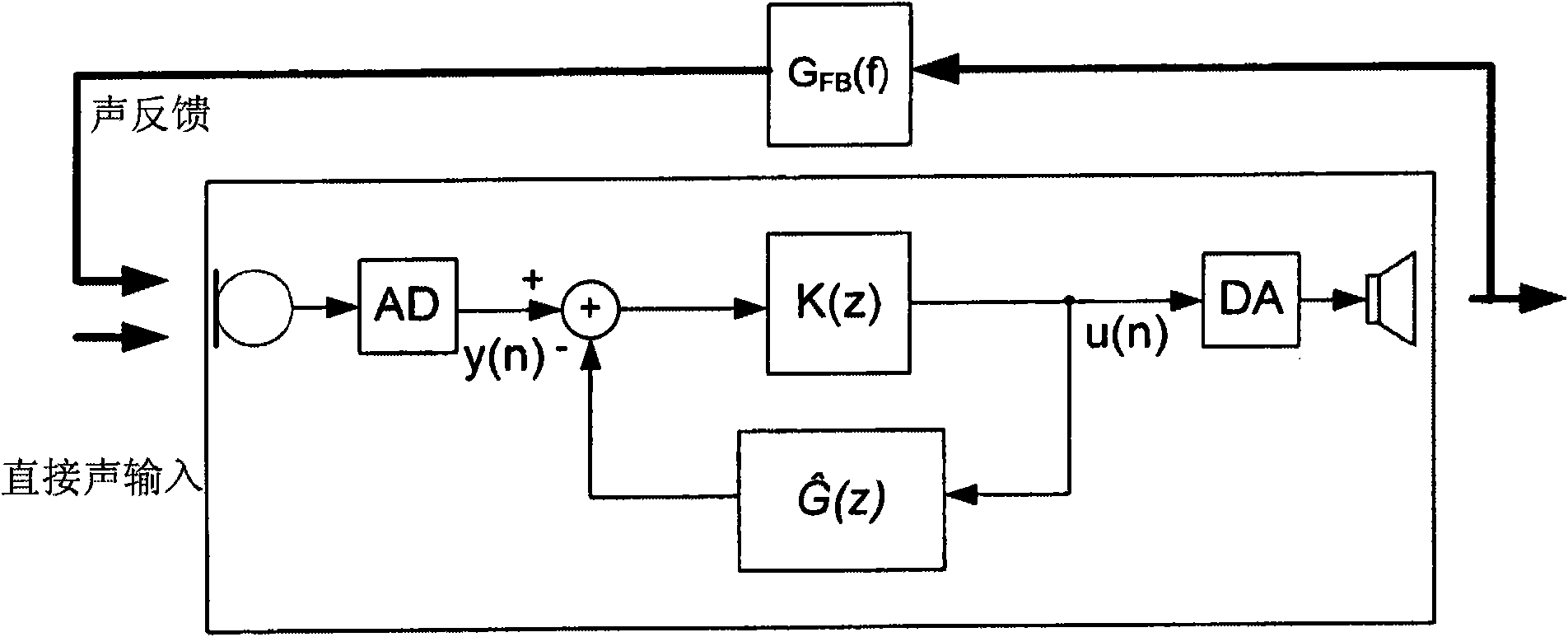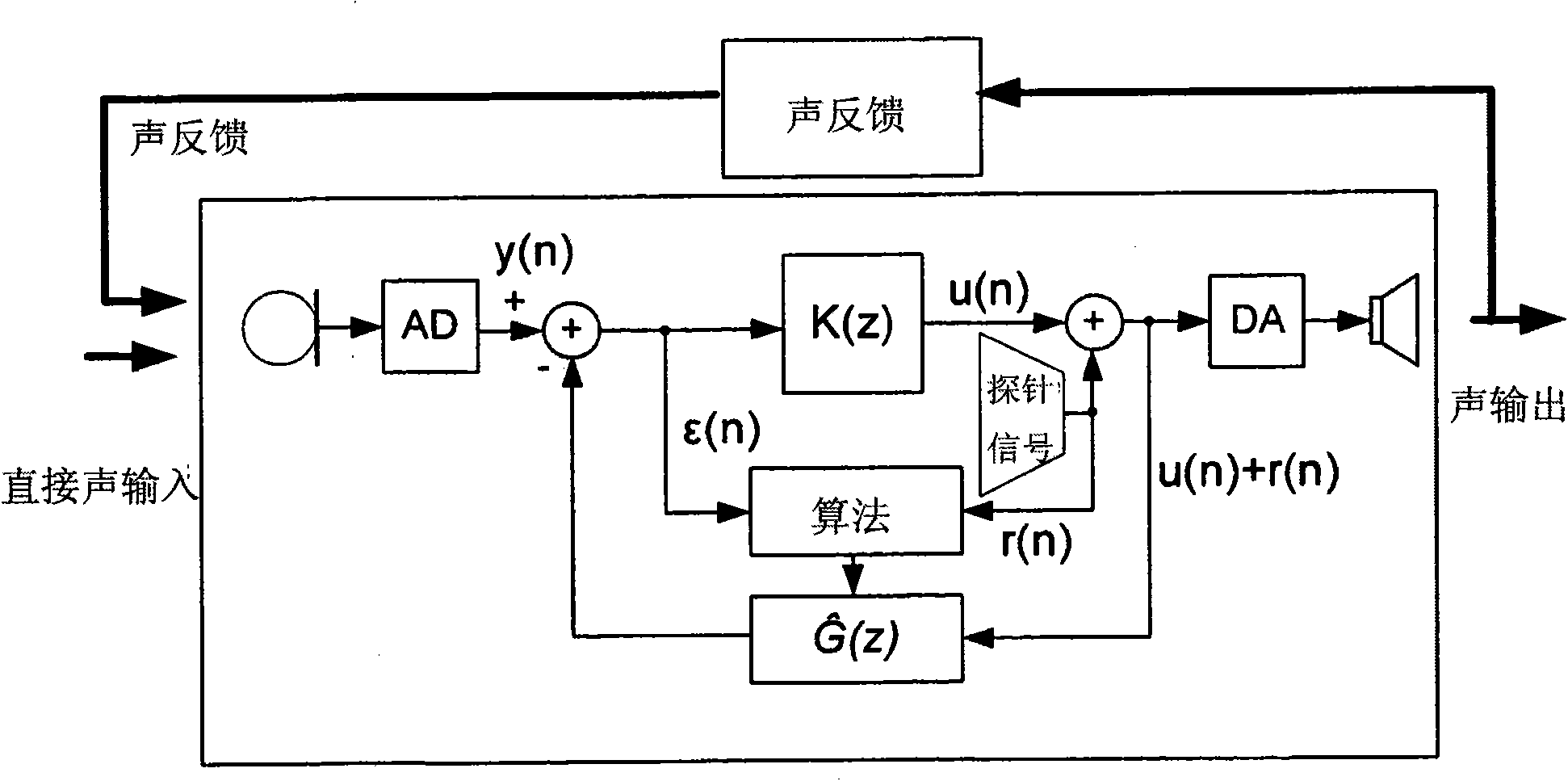Hearing aid system with feedback arrangement to predict and cancel acoustic feedback, method and use
A hearing aid and acoustic feedback technology, applied in hearing aid systems, generators of electrical probe signals, and compensating for acoustic feedback in hearing aid systems, can solve problems such as oscillations that cannot be easily established
- Summary
- Abstract
- Description
- Claims
- Application Information
AI Technical Summary
Problems solved by technology
Method used
Image
Examples
Embodiment Construction
[0089] Figure 1a is a schematic illustration of a hearing aid system with a forward path, comprising a microphone for receiving acoustic input from the environment, an AD converter, a processing section K(z), a DA converter and for generating an acoustic output to the hearing aid wearer of speakers. Intentional signal pathways and components of the system are surrounded by dashed box lines. Specifies the (external, unintentional, frequency-dependent (f)) acoustic feedback path G from loudspeaker to microphone FB (f). exist Figure 1a In , the acoustic input from the acoustic feedback path is indicated as "acoustic feedback", and the acoustic input from other sources in the acoustic environment is marked as "direct acoustic input" (in Figure 1b and 1c is also similar).
[0090] Figure 1b shows the signal path and transfer function (including the external leakage path) of a prior art hearing aid system, including gain and phase responses with the aim of canceling the ext...
PUM
 Login to View More
Login to View More Abstract
Description
Claims
Application Information
 Login to View More
Login to View More - R&D
- Intellectual Property
- Life Sciences
- Materials
- Tech Scout
- Unparalleled Data Quality
- Higher Quality Content
- 60% Fewer Hallucinations
Browse by: Latest US Patents, China's latest patents, Technical Efficacy Thesaurus, Application Domain, Technology Topic, Popular Technical Reports.
© 2025 PatSnap. All rights reserved.Legal|Privacy policy|Modern Slavery Act Transparency Statement|Sitemap|About US| Contact US: help@patsnap.com



